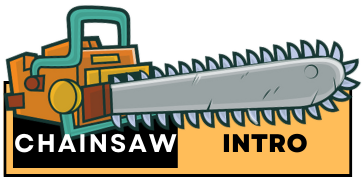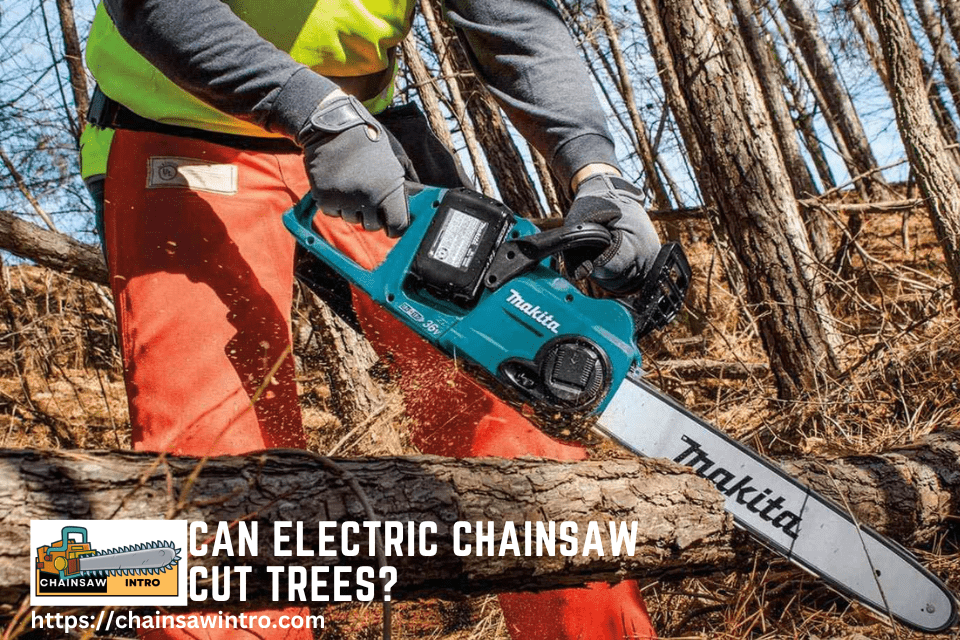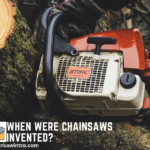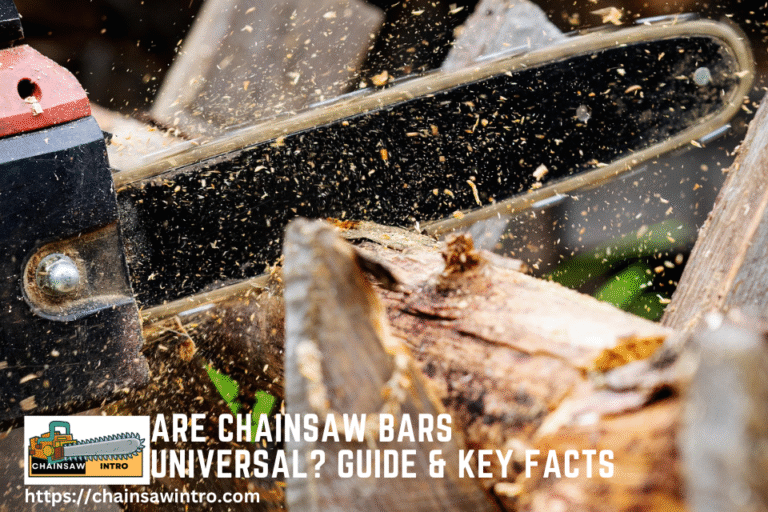Yes, electric chainsaws can cut trees. They are powerful tools that can make quick work of even the largest tree. However, there are a few things to keep in mind when using an electric chainsaw.
When most people think of cutting down trees, they picture a powerful, roaring gas chainsaw tearing through thick logs. However, with the rise of modern electric chainsaws, many homeowners and DIY users are asking: Can an electric chainsaw really cut down trees?
The short answer is yes—electric chainsaws can cut trees. But how effectively they perform depends on the size of the tree, the type of chainsaw, and your cutting technique. In this article, we’ll cover everything you need to know about using electric chainsaws for tree cutting, including their strengths, limitations, and key safety tips.
Can Electric Chainsaws Cut Down a Tree?
Yes, an electric chainsaw can cut down trees, but it works best for small to medium-sized trees. Unlike heavy-duty gas chainsaws designed for large tree felling, electric chainsaws are generally lighter, quieter, and less powerful.
- Corded electric chainsaws: Best for continuous use as long as you have access to an outlet. They can cut small to mid-sized trees with trunks up to 12–16 inches in diameter, depending on the model.
- Battery-powered chainsaws: Great for mobility and convenience, though their cutting ability is limited by battery capacity and motor strength. They’re ideal for pruning, trimming, and cutting down trees up to 10–14 inches thick.
For larger hardwood trees, a gas-powered chainsaw is still the better option.
Can an ELECTRIC CHAINSAW Cut Down Trees.. ? | Cottage QUARANTINE Day 18
How Electric Chainsaws Perform for Tree Cutting?
Electric chainsaws are designed for specific cutting tasks, with performance varying by power source and specifications:
- Corded Electric Chainsaws: Models like the Oregon CS1500 (15-amp, 18-inch bar) deliver consistent power, cutting through softwoods (e.g., pine) and hardwoods (e.g., oak) up to 16 inches in diameter with ease. They’re ideal for users with access to a power outlet and no runtime limitations.
- Battery-Powered Chainsaws: Models such as the Ego CS2005 (56V, 20-inch bar) and Greenworks Pro 80V (18-inch) can cut trees up to 14-16 inches, making 50-90 cuts per 2.0Ah battery charge. Higher-capacity batteries (e.g., 5.0Ah) extend runtime for larger jobs.
- Cutting Capacity: Electric saws with 12-20 inch bars are best for small to medium trees (6-16 inches), pruning, and storm cleanup. For example, the Greenworks 40V 12-inch model is perfect for branches under 8 inches, while the 80V model handles larger logs.
Electric chainsaws struggle with very large trees (20+ inches) or continuous heavy-duty cutting, where gas saws (e.g., Echo CS-590) with 50-60cc engines are more effective.
Key Factors Affecting Electric Chainsaw Tree Cutting
Several factors determine how well an electric chainsaw cuts trees:
- Motor Power: Higher voltage (e.g., 80V) or amperage (e.g., 15-amp) provides more cutting power. The Greenworks 80V rivals a 42cc gas saw while 40V models suit lighter tasks.
- Bar Length: A 16-18 inch bar is ideal for medium trees (10-14 inches), while 12-inch bars are better for pruning, per our article on chainsaw bar length. Longer bars require more power, impacting battery life.
- Chain Type: Low-kickback chains (ANSI B175.1-compliant) used in most electric saws ensure safer, smoother cuts but may be slower for hardwoods.
- Wood Type: Softwoods like pine cut faster than dense hardwoods like maple, which strain the motor and reduce battery runtime.
- Battery Life: Battery-powered saws last 20-40 minutes per charge (2.0Ah), requiring spares for extended work.
- Maintenance: A sharp chain and proper lubrication reduce motor strain, improving cutting efficiency, as discussed in our chainsaw maintenance guides.
Best Uses of Electric Chainsaws for Tree Cutting
While electric chainsaws may not be designed for giant oaks or dense hardwood forests, they are highly effective in several scenarios:
Pruning and Limb Removal
Electric chainsaws excel at removing branches, limbs, and small overgrowth. Their lighter weight makes them easier to maneuver overhead or in tight spaces.
Felling Small Trees
If you’re clearing small trees in your yard or cutting down saplings, electric chainsaws are efficient and safe. Most models can handle trees up to 12 inches in diameter without issue.
Storm Cleanup
After storms, fallen branches and small trees are common. Electric chainsaws are excellent for quick cleanup since they start instantly and don’t require gas mixing or carburetor adjustments.
Firewood Cutting
For homeowners preparing firewood from smaller logs, electric chainsaws are a practical option. They can handle light to medium-duty cutting sessions with ease.
Advantages of Using Electric Chainsaws for Tree Cutting
Electric chainsaws offer several benefits for tree cutting:
- Quiet Operation: Producing 70-90 dB (vs. 100-120 dB for gas saws), electric saws are ideal for urban areas with noise restrictions, per our article on electric chainsaw noise.
- Eco-Friendly: Zero emissions and compatibility with biodegradable bar oil make them environmentally friendly.
- Low Maintenance: No fuel mixing or carburetor cleaning; brushless motors in models like the Ego CS2005 reduce wear.
- Ease of Use: Lightweight (8-13 pounds) and with features like tool-less chain tensioning, electric saws are beginner-friendly.
- Safety Features: Chain brakes and low-kickback chains reduce kickback risks, which cause over 30% of chainsaw injuries.
These advantages make electric chainsaws a top choice for homeowners and light commercial users.
Limitations of Electric Chainsaws for Tree Cutting
While effective for many tasks, electric chainsaws have limitations:
- Power Constraints: They lack the torque of gas saws for large trees (20+ inches) or continuous heavy-duty cutting.
- Runtime: Battery models require recharging or spare batteries (costing $50-$150), limiting use for long sessions.
- Cord Restrictions: Corded saws are tethered to outlets, restricting mobility for remote tree cutting.
- Durability: Some components, like plastic bucking spikes on Greenworks models, may wear under heavy use.
For professional logging or large-scale tree felling, gas chainsaws remain the standard, per our article on chainsaw compression.
Should You Use an Electric Chainsaw for Tree Cutting?
If your goal is to handle yard maintenance, pruning, trimming, or cutting down small to medium trees, an electric chainsaw is a fantastic tool. It’s quieter, eco-friendly, and beginner-friendly while still capable of handling most residential cutting tasks.
However, if you frequently cut large hardwoods, thick logs, or trees over 16 inches in diameter, you’ll likely need the extra power of a gas chainsaw.
Top Electric Chainsaw Models for Tree Cutting
Based on 2025 reviews from Home Depot and TechGearLab, these electric chainsaws excel for tree cutting:
- Greenworks Pro 80V 18-inch: Comparable to a 42cc gas saw, cuts 14-16 inch trees with 20-30 minute runtime. Priced at $350-$400.
- Ego CS2005 20-inch (56V): Handles trees up to 16 inches, with up to 90 cuts per 2.0Ah battery. Costs $300-$350.
- Oregon CS1500 18-inch (corded): Cuts 16-inch logs with consistent power and a self-sharpening chain. Priced at $100-$150.
- Greenworks 40V 12-inch: Ideal for pruning branches (up to 8 inches), lightweight at 8 pounds. Costs $100-$150.
These models offer a balance of power, portability, and quiet operation, per Consumer Reports.
Tips for Cutting Trees with an Electric Chainsaw
To maximize performance and safety when cutting trees, follow these tips from 2025 Oregon guides and ArboristSite:
- Choose the Right Bar Length: Use a bar 2-4 inches longer than the tree’s diameter for efficient cutting (e.g., 16-inch bar for 12-inch trees).
- Sharpen the Chain: File every 2-3 hours to maintain cutting speed, as discussed in our chainsaw file guide.
- Use Proper Lubrication: Apply biodegradable bar oil every 10-15 minutes to reduce friction and motor strain.
- Plan the Cut: For felling, use a notch cut (1/3 of the tree’s diameter) and a back cut, ensuring a clear escape path.
- Carry Spare Batteries: For battery models, have extra batteries (e.g., 5.0Ah) for uninterrupted work on larger trees.
- Check the Sprocket and Bar: Ensure the sprocket and bar are in good condition to prevent derailment, per our articles on chainsaw sprockets and bars.
Final Thoughts
So, can an electric chainsaw cut trees? Yes—absolutely. Electric chainsaws are more than capable of cutting down small to medium trees, removing branches, and handling firewood preparation. While they aren’t a substitute for heavy-duty gas saws in logging or large-scale felling, they are an excellent choice for homeowners who value convenience, quieter operation, and eco-friendly performance.
For most residential users, an electric chainsaw is not just good enough—it’s the perfect balance of power, safety, and ease of use.
Frequently Asked Questions
Can an electric chainsaw cut down a large tree?
Most electric chainsaws are best for small to medium trees up to 12–16 inches in diameter. For larger hardwood trees, a gas-powered chainsaw is recommended.
Can I use a battery-powered chainsaw for tree felling?
Yes, but only for smaller trees. Battery chainsaws typically handle trunks up to 10–14 inches. Their runtime also limits continuous heavy cutting.
Are electric chainsaws powerful enough for hardwood?
Electric chainsaws can cut softer hardwoods in smaller diameters, but they struggle with dense hardwood logs over 16 inches. For that, you’ll need a stronger gas model.
How long does a battery last when cutting trees?
Most modern batteries last 20–45 minutes per charge, depending on the size of the saw, the wood’s thickness, and how often you’re cutting.
Which is better for cutting trees: corded or battery electric chainsaws?
- Corded models provide consistent power but require access to an outlet.
- Battery models are more portable but limited by charge time.
Your choice depends on whether you prioritize mobility or continuous cutting power.
Is it safe to cut down trees with an electric chainsaw?
Yes, but proper safety gear and technique are essential. Always wear protective equipment, plan the cut, and avoid tackling trees that are too large for your saw’s capacity.
Is It Worth Buying an Electric Chainsaw?
An electric chainsaw is a great investment for anyone who needs to do a lot of cutting or who doesn’t have access to a gas-powered chainsaw. They are much quieter than gas saws, so you won’t disturb your neighbors, and they emit no fumes, so you can use them indoors without worrying about ventilation. Electric chainsaws also require very little maintenance and are very easy to use.
The only downside is that they can be expensive, but if you need a chainsaw for occasional use, an electric one is definitely worth the investment.
Is an Electric Chainsaw Powerful Enough?
Electric chainsaws were once a joke when compared to gas powered chainsaws, but they’ve come a long way. Today’s electric chainsaws are every bit as powerful and reliable as their gas powered counterparts and are capable of cutting through anything from tree limbs to logs in a matter of minutes. You may have heard horror stories about cheap electric chainsaws that burned out on the first use, but this isn’t true of all models. Today’s electric chainsaws have better power cords, bigger motors and far better build quality than what you’ll find in the bargain bin at your local hardware store.
The most popular electric chainsaw for woodworking is the Greenworks G-Max Cordless Chainsaw. It has a 16 inch bar and chain, runs on an 80V battery and can cut through logs like butter! This battery-powered chainsaw is ideal for working with rough logs since it doesn’t require a power cord to operate. It even comes with a lifetime warranty!
William C. Bozeman is a seasoned chainsaw expert and outdoor power tool enthusiast with over a decade of hands-on experience in tree cutting, forestry, and property maintenance. Having worked with leading chainsaw brands like Stihl, Husqvarna, and Oregon, Bozeman shares practical knowledge, safety tips, and honest reviews to help homeowners, DIYers, and professionals make informed decisions.












